Things got a little frenzied when one of the adult Swainson’s Hawks would bring a vole in to feed their juvenile offspring.
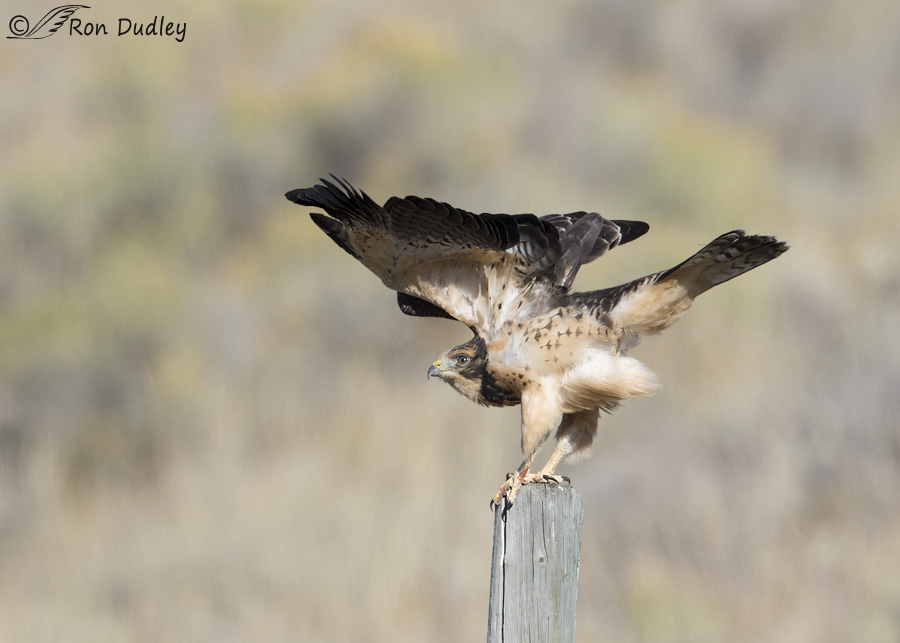
1/2500, f/6.3, ISO 500, Canon 7D Mark II, Canon EF500mm f/4L IS II USM +1.4 tc, not baited, set up or called in
This is one of two siblings I photographed earlier this month near Monida, Montana. The young birds could fly but they weren’t yet hunting on their own so they would wait on a variety of nearby perches for their parents to bring in voles. The wait was often a long one so in the interim this youngster felt the need for a wing stretch.
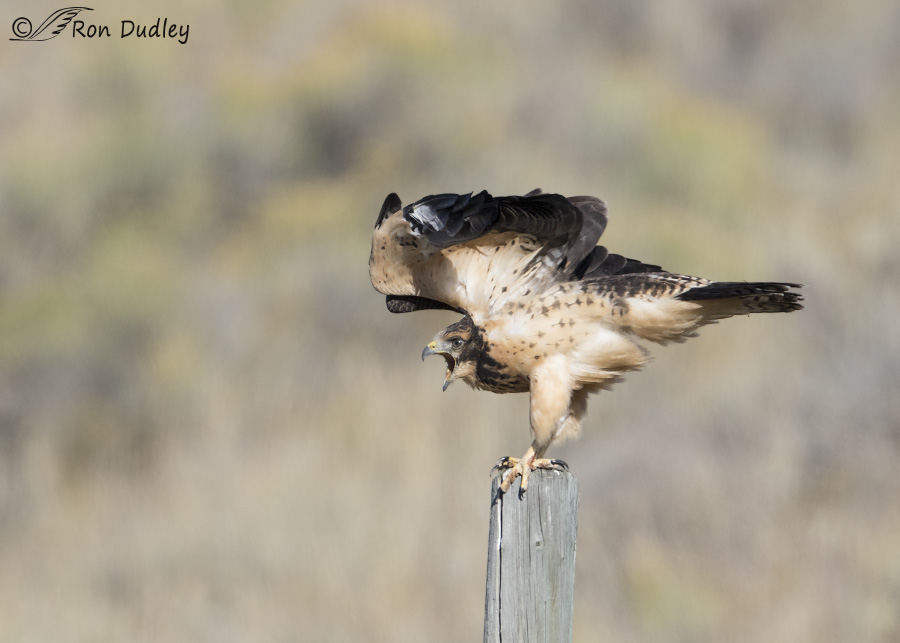
1/2500, f/6.3, ISO 500, Canon 7D Mark II, Canon EF500mm f/4L IS II USM +1.4 tc, not baited, set up or called in
It was sort of double stretch (it did it twice without completely folding its wings in-between) and toward the end of the second one it spotted a parent coming in with a vole while it was still far across the valley. This is their typical reaction to food – screaming. The injured sibling (an apparent broken upper leg) of this youngster was perched some distance away but it typically only took a few moments for either of them to fly in and compete for the meal so the reaction of both young birds to food could be pretty intense.
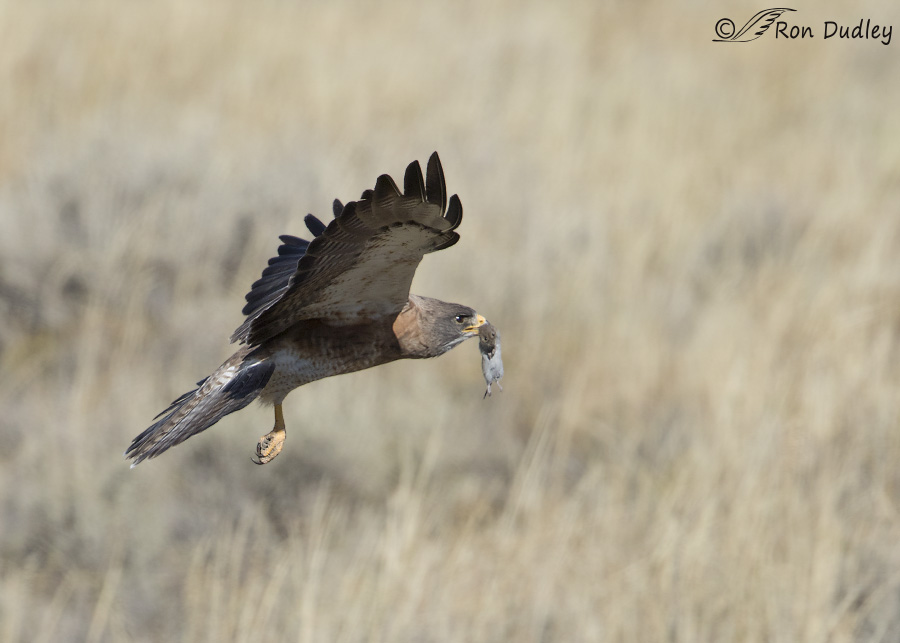
1/2000, f/6.3, ISO 500, Canon 7D Mark II, Canon EF500mm f/4L IS II USM +1.4 tc, not baited, set up or called in
This is the parent bringing in the vole. Based on the catch light I can see in both eyes of the vole when I crop tightly on this image I’m pretty sure that at this point the vole was still alive.
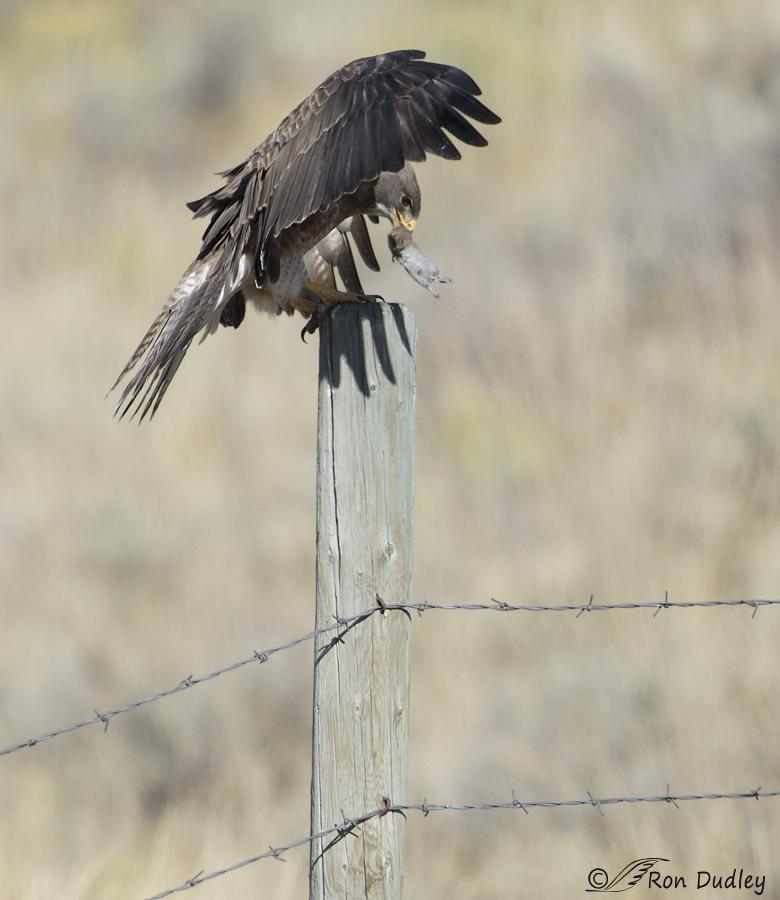
1/2000, f/6.3, ISO 500, Canon 7D Mark II, Canon EF500mm f/4L IS II USM +1.4 tc, not baited, set up or called in
The adult passed the juvenile on the fence post and landed on another post to my right..
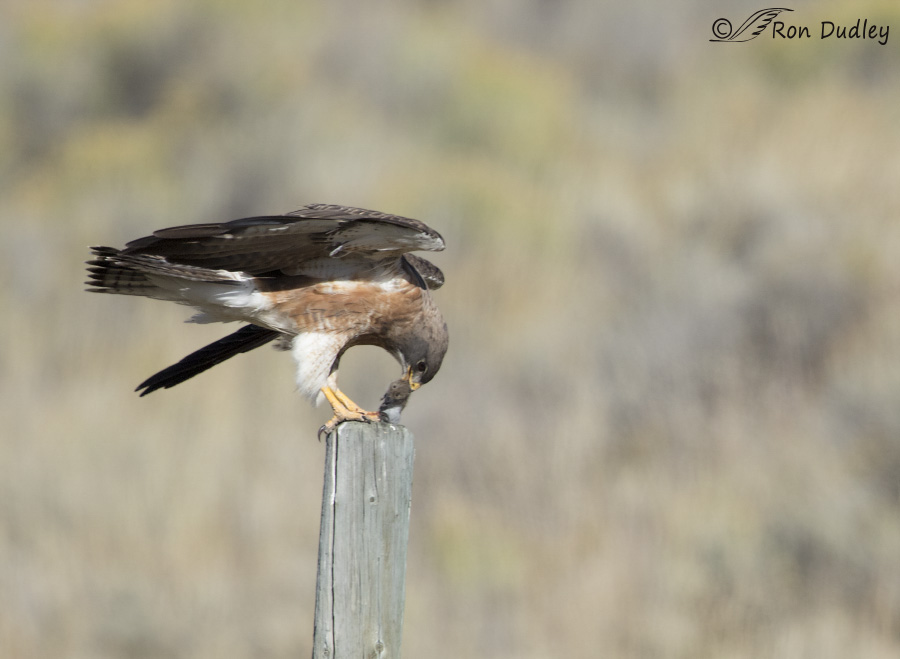
1/2500, f/6.3, ISO 500, Canon 7D Mark II, Canon EF500mm f/4L IS II USM +1.4 tc, not baited, set up or called in
where it instantly (it hadn’t even completely folded its wings yet after landing) killed the vole…
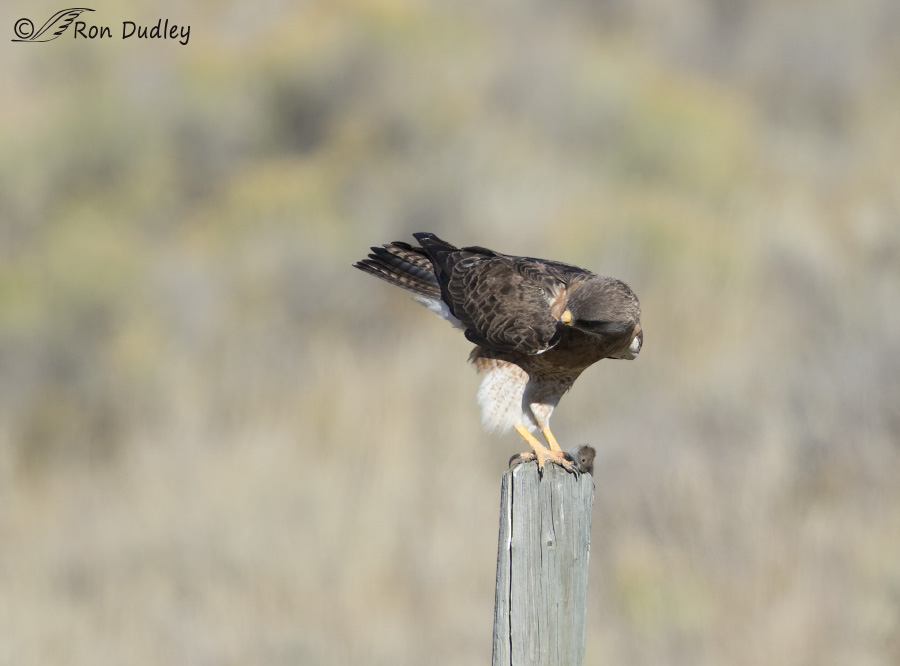
1/2000, f/6.3, ISO 500, Canon 7D Mark II, Canon EF500mm f/4L IS II USM +1.4 tc, not baited, set up or called in
and then looked back at the nearby youngster that was already coming in for the meal.
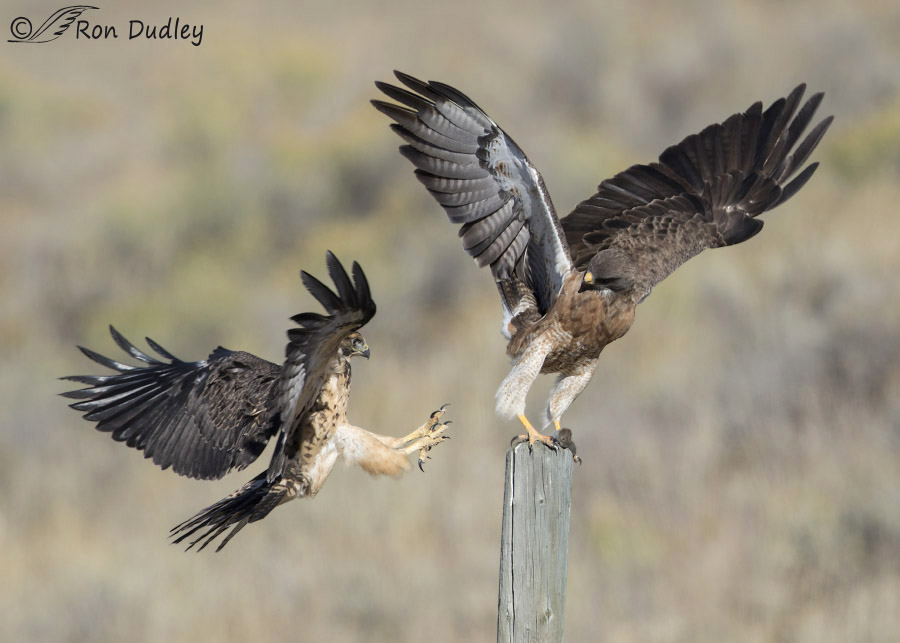
1/2000, f/6.3, ISO 500, Canon 7D Mark II, Canon EF500mm f/4L IS II USM +1.4 tc, not baited, set up or called in
Knowing that the juveniles were still awkward and clumsy in flight (and landing) the adult pinned the vole to the top of the post for as long as possible…
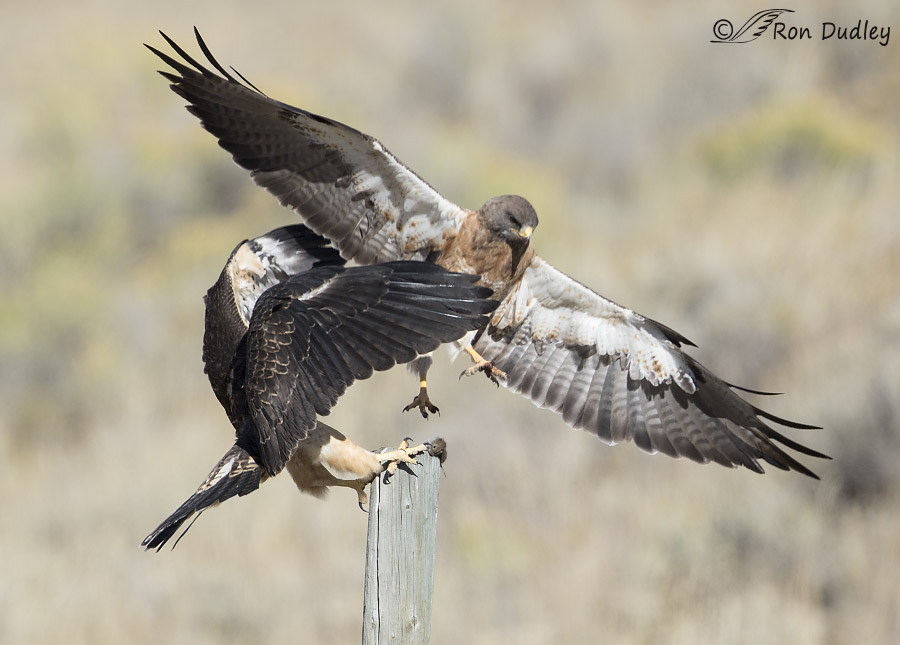
1/2000, f/6.3, ISO 500, Canon 7D Mark II, Canon EF500mm f/4L IS II USM +1.4 tc, not baited, set up or called in
before taking off at the last second and leaving the vole behind. As it landed the juvenile made an attempt at snagging the vole with one of its talons but…
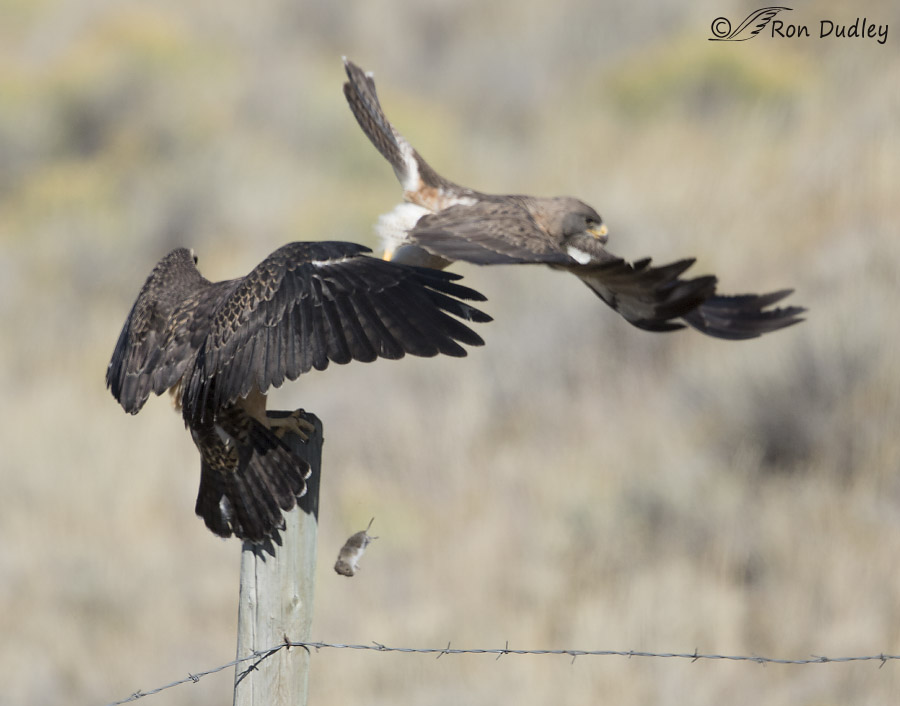
1/2000, f/6.3, ISO 500, Canon 7D Mark II, Canon EF500mm f/4L IS II USM +1.4 tc, not baited, set up or called in
instead it knocked the vole to the ground.
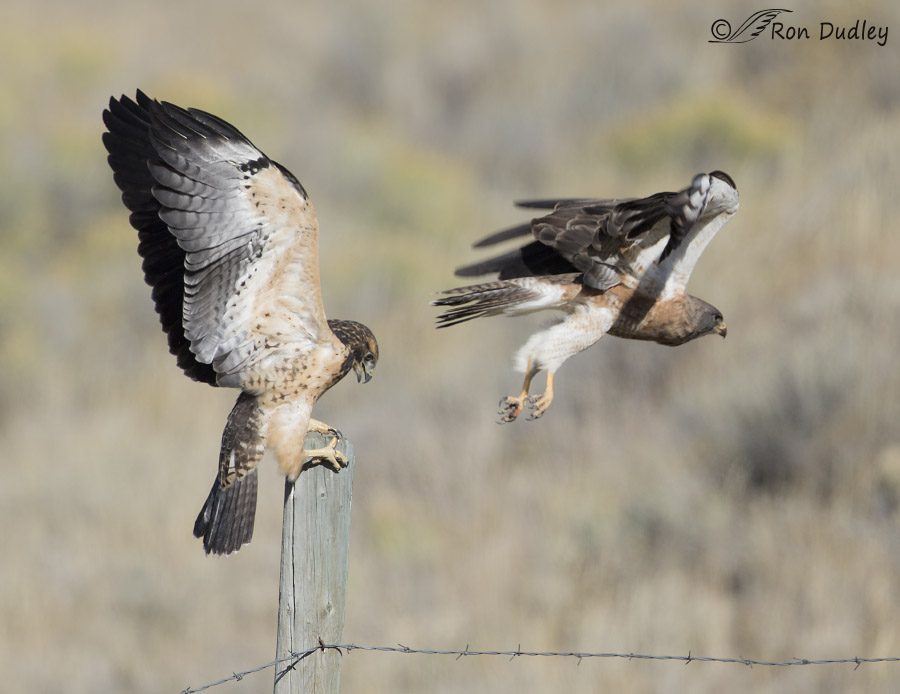
1/2000, f/6.3, ISO 500, Canon 7D Mark II, Canon EF500mm f/4L IS II USM +1.4 tc, not baited, set up or called in
The young bird knew exactly where it fell…
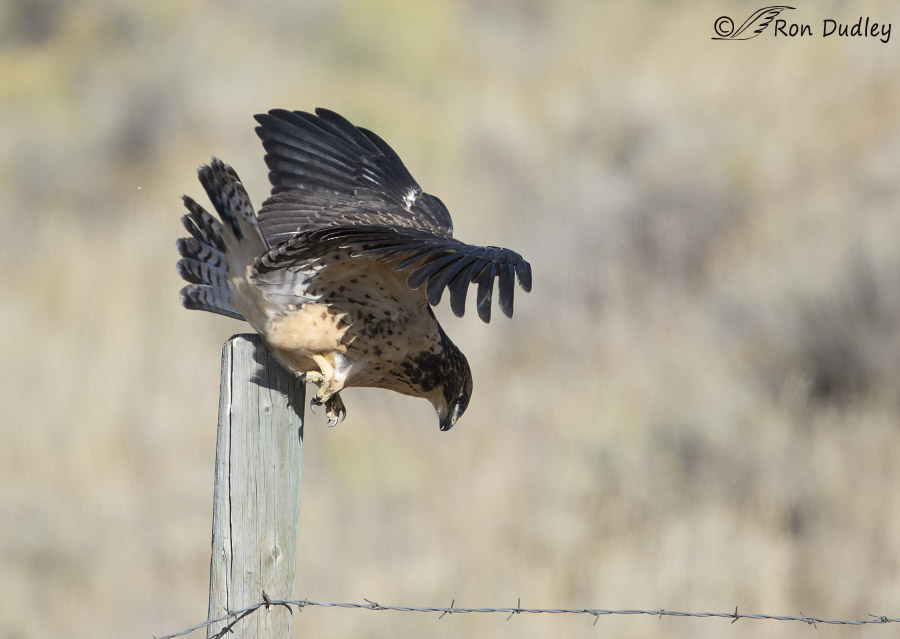
1/2000, f/6.3, ISO 500, Canon 7D Mark II, Canon EF500mm f/4L IS II USM +1.4 tc, not baited, set up or called in
and dived straight down to retrieve it.
At this point I lost focus on the juvenile in the tall grasses at the base of the post but it was obvious that it enjoyed the meal. I deleted all images after this one and I can’t remember if the other youngster came in to compete for this vole or not.
I posted one of these images (the 7th) on the road while I was still on my camping trip and at that time I promised to post more of the series at a later date when I had better internet access. This is that post.
Ron
Addendum: I’m adding these two versions of a couple of these images in response to the second comment from Dave Sparks, below. The red square is my active focus point for each shot. It shows that part of the reason the adult bird in image 1031 is noticeably softer than it is in image 1032 might be because the active focus point was on the juvenile’s right wing in the first image and that wing was closer to me in the first image than its head was in the second image (where the active focus point was for that shot).
In other words, the adult bird was further behind my point of focus in the first image than it was in the second and that likely accounts for some of the discrepancy in sharpness of the adult (the bird on the right). Keep in mind that my depth of field at this effective focal length of 1120 mm is extremely shallow.
Both images below are full frame (uncropped).
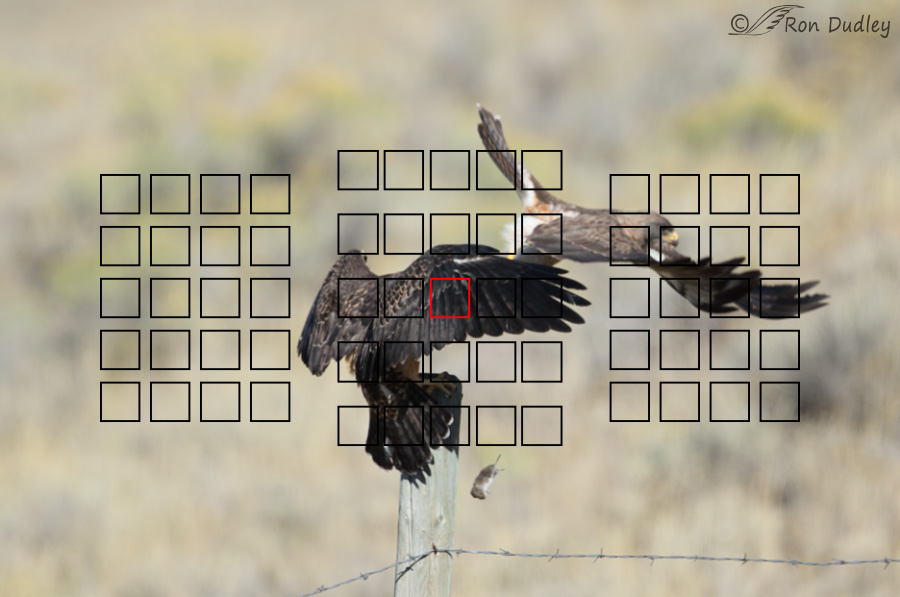
Image 1031, active focus point in red
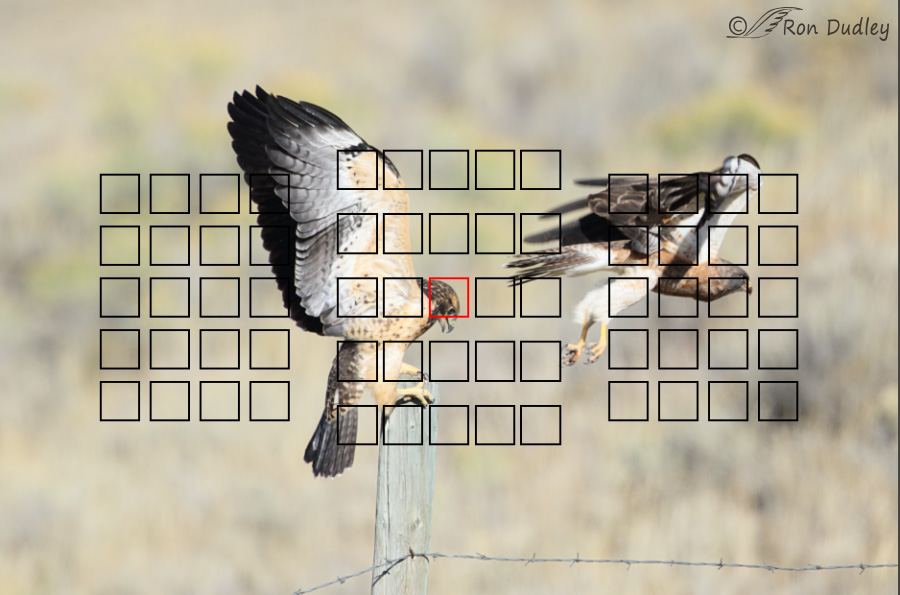
Image 1032, active focus point in red


Another brilliant series.
Loved that screaming youngster.
What is the prognosis for the one with the broken leg? Or do I not want to know?
Thanks, EC.
I’m not very optimistic about the long term survival of the injured youngster once it has to hunt on its own (which should already have started). Perhaps an adult bird with already developed hunting skills would have a chance if it broke a leg but I doubt this unskilled juvenile will make it, especially considering the migration it must make soon to South America.
I tried to catch it once when it seemed to be struggling on the ground – my intention was to take it to the rehab center in Bozeman, MT where the Barn Owl is recovering right now. But as soon as I opened my pickup door the bird took off.
A stunning encounter sequence…doesn’t get any better than these! Thanks so much…Jer
Thanks a lot, Jerry.
Great series! I love that you were able to get a shot of the falling vole. Seeing all the interaction between the two birds makes me smile.
“I love that you were able to get a shot of the falling vole.”
I actually got two of them, Susan, but I thought this one was the best. Thank you.
Splendid series, well done! Watching raptors parent is probably what I enjoy most about working with the Cornell redtail hawk cam and keeping track of some of the other cams out there. It’s fascinating to see them handle each stage of their kids’ growth and development, leading them into adulthood, one step at a time. While humans could learn a LOT from raptor parenting, we’re still far more alike than we are different. Kids, across species, remain kids 😉
“Kids, across species, remain kids”
Yes, they certainly do, Laura. And I agree with you about how raptors adapt their parenting methods to the stage of development of the youngsters. Pretty darned neat!
Awesome sequence. Surprising how well f/6.3 kept both birds pretty much in focus.
“Surprising how well f/6.3 kept both birds pretty much in focus.”
Dave, I keep comparing #9 and # 10 and wondering why the adult bird is sharper in #10 than it is in #9. I have a theory but who knows…?
Nikon’s ViewNX2 shows the actual focus point. Does Canon’s viewer have a similar function?
Dave, Yes, Canon’s Digital Photo Professional (DPR) has such a viewer. I’ve posted those two images showing the active focus points.
I find the ability to examine the active focus point very useful when I become confused about why a feature is or is not more in focus in an image. I wish this capability were built into Lightroom and Photoshop.
“I wish this capability were built into Lightroom and Photoshop”.
As do I, Dave. I don’t use it often but when I need to it sure would be nice to not have to go elsewhere.
So fun to see the interactions.
I’m glad you enjoyed them, Arwen.
Your shots and your comments are always real winners….
🙂
What an amazing series to capture…and share! My favorite shots are 1-11. Once again, I pity the poor vole…but glad the hawks have found food…it’s a conflict….
Thanks, Patty. I guess I’m pretty clinical in my reaction to the plight of the vole. For some reason it occasionally bothers me a little more when the prey is a bird.
WOW! Wonderful series with great detail:) Know when we have young great horned owls around they also bounce around and scream for food.
Judy, Competition between juvenile raptors for food is typically very intense. It’s fascinating to watch but I can’t help feeling empathy for those who lose – particularly when it’s the “runt” of the bunch. Thank you.
Yes, this is a great series, and reminds me of the ‘story’ you shared with us of the barn owl who hurriedly vacated his ‘perch’ on the barn window when the clumsy juvenile approached. Thanks!
Clumsy juveniles in the bird world are pretty universal, Alison. I’m glad you enjoyed the series. Thanks.
Great series Ron! Your photographs alone tell a story!
I like to tell photographic stories, Nancy – behaviors fascinate me. Thanks.
Great series. My favourite is number seven. It’s beautiful.
Thanks for sharing.
Thank you, Jorge.
Absolutely great shots, wonderful behavioral attitudes, sharp as a tack to my eye, perfect enjoyment looking at them over and over again!!! Many thanks for sharing these shots.
Thanks a lot, Dick. I figured that you might enjoy this series.